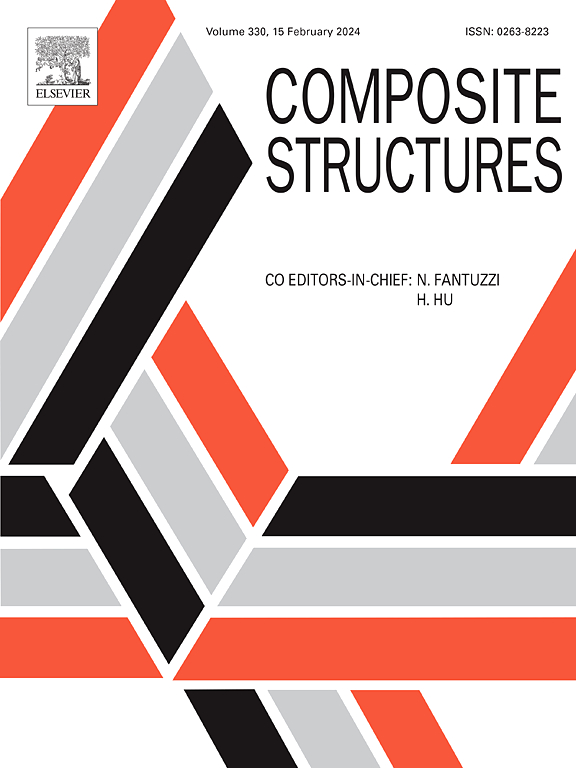基于蔗渣纤维和再生橡胶废料的可持续增殖型蜂窝结构
IF 7.1
2区 材料科学
Q1 MATERIALS SCIENCE, COMPOSITES
引用次数: 0
摘要
本文介绍了一种新的可持续的方法来回收甘蔗甘蔗渣纤维和橡胶废料,以改善再入式蜂窝结构的机械性能和生长性。拉伸试验,分析预测和多尺度计算分析进行评估力学性能和细胞几何变量之间的关系。采用全因子设计(23)评估了厚度(2和4 mm)、长度(10和20 mm)和角度(- 10和- 20°)等因素对抗拉强度和应变、抗拉模量和泊松比的敏感性。通过方差分析(ANOVA)确定了显著的影响和贡献,表明将短的、随机的甘蔗甘蔗渣纤维与橡胶颗粒结合在一起,增强了auxetic结构的韧性。极限抗拉强度和抗拉模量与厚度的增加呈正相关。泊松比不仅受单个因素的影响,还受三阶重入结构之间的相互作用的影响,其中壁长和壁厚对杂化重入结构的影响最为显著。本文章由计算机程序翻译,如有差异,请以英文原文为准。
Sustainable auxetic honeycomb structures based on sugarcane bagasse fibres and recycled rubber wastes
This work introduces a novel and sustainable approach for recycling sugarcane bagasse fibres and rubber wastes to improve the mechanical properties and the auxetic characteristics of re-entrant honeycomb structures. Tensile tests, analytical predictions, and multiscale computational analysis are conducted to assess the relationship between the mechanical properties and cell geometric variables. A full factorial design (23) is performed to evaluate the sensitivity of factors such as thickness (2 and 4 mm), length (10 and 20 mm) and angle (−10 and −20°) on the ultimate tensile strength and strain, tensile modulus, and Poisson’s ratio of the auxetic structures. Significant effects and contributions are identified through an Analysis of Variance (ANOVA), indicating that the incorporation of short, random sugarcane bagasse fibres combined with rubber particles enhances the toughness of the auxetic structure. The ultimate tensile strength and tensile modulus have a positive correlation with increased thickness. The Poisson’s ratio is affected not only by individual factors but also by third-order interactions among the re-entrant topologies, with wall length and thickness having the most significant impact on the hybrid re-entrant structure.
求助全文
通过发布文献求助,成功后即可免费获取论文全文。
去求助
来源期刊

Composite Structures
工程技术-材料科学:复合
CiteScore
12.00
自引率
12.70%
发文量
1246
审稿时长
78 days
期刊介绍:
The past few decades have seen outstanding advances in the use of composite materials in structural applications. There can be little doubt that, within engineering circles, composites have revolutionised traditional design concepts and made possible an unparalleled range of new and exciting possibilities as viable materials for construction. Composite Structures, an International Journal, disseminates knowledge between users, manufacturers, designers and researchers involved in structures or structural components manufactured using composite materials.
The journal publishes papers which contribute to knowledge in the use of composite materials in engineering structures. Papers deal with design, research and development studies, experimental investigations, theoretical analysis and fabrication techniques relevant to the application of composites in load-bearing components for assemblies, ranging from individual components such as plates and shells to complete composite structures.
 求助内容:
求助内容: 应助结果提醒方式:
应助结果提醒方式:


